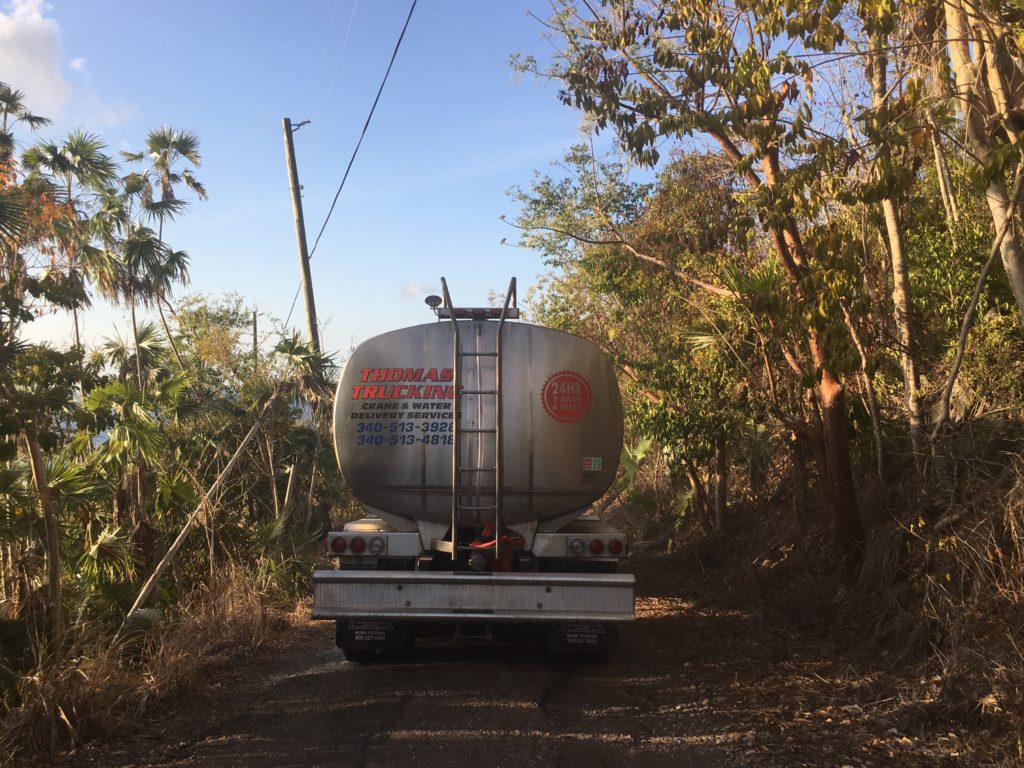
The territory has battled various droughts over the decade, some years more severe than others, but even after significant rainfall over the last couple weeks the territory is now considered to be in a severe drought according to the United States Drought Monitor Map.
Director of the Green Caribbean Center at the University of the Virgin Islands Greg Guannel said the territory will be breaking a record this year, with the past few months the driest ever reported.
“Historically, we’ve experienced drought since ever,” Guannel said.
“From the history books, there was a severe drought, followed by a Hurricane, in 1733 that led to a serious slave revolt in St. John. There was another severe drought in 1967 to 1968, but there were many droughts during the slave period, apart for the one in 1733. In 1974 and 1983, drought was really severe and impacted people’s ability to get water. The 1994 to 1995 drought is also mentioned many times in reports, as well as the droughts in 2002, 2005, and famously in 2015,” Guannel said.
But what constitutes a drought and how do scientists assess it?
“There are a combination of factors when assessing drought,” National Drought Mitigation Center climatologist Curtis Riganti said. “You are looking at accumulated precipitation deficits and lack of water for various natural reasons, like loss of water through evaporation, transpiration, or lack of precipitation.”
Additional factors that don’t pertain to direct rainfall are taken into consideration when determining drought, like the unusual soaring of 90-degree temperatures when, typically, the territory hovers between 80 to 85 degrees.
Riganti said when an area experiences higher than average temperatures it indirectly contributes to drought because it can cause a higher amount of evaporation.
The drought monitor map’s categories range from a level D0, abnormally dry, to level D4, an exceptional drought. Currently the Virgin Islands is experiencing level D2, severe drought.
“What these different categories are communicating is how unusual any area is compared to its own historical record. The categories take different data sources like groundwater and precipitation, as well as many other meteorological indicators of drought and then put these into percentiles,” Riganti said.
A category D4 drought would mean conditions are in the first or second driest percentile. A category D3 drought would mean the conditions are in the third through fifth driest percentile. A category D2 drought would mean the conditions are in the sixth through tenth driest percentile. And a category D1 drought would mean the conditions are in the tenth through twentieth driest percentile.
According to the drought summary by the United States Geological Survey, wells are being rapidly depleted of water in the territory. Since June 4, the USGS Grade School 3 well in Charlotte Amalie is said to have a water level 12.5 feet below the land surface, the lowest level that has been observed since July 2019.
University of the Virgin Islands Hydrologist Brian Neff said groundwater levels are important since this is the level of the water table. “The groundwater level moves up and down and scientists can examine the up and down pattern and know a lot about drought conditions that we can’t know by looking just at rainfall,” he said. “When the groundwater level rises, that is a sign that rain is falling, seeping into the ground, and it is not all evaporating or being taken up by plants. A rising groundwater level is what we’re hoping for right now.”
On St. John, the groundwater is depleting at a more alarming rate. “Provisional well data provided by the USGS for the Susannaberg DPW 3 well on St. John shows the continuation of a steep decline in water level since very late January of 2020. At that time, the water level was just over eight feet below the land surface, the highest it’s been during at least the past 12 months. Since then, the water level has rapidly dropped to its current value of nearly 16 feet below the land surface,” the drought monitor summary reads.
Neff said when a report finds that water is a certain amount of feet below land surface, that is the water table, the point where water fills 100 percent of the gaps between soil particles.
“We have all seen rain fall on the ground and soak into it. The water is actually soaking into tiny air spaces between soil particles. The deeper the water seeps into the ground, usually the wetter the ground becomes. Eventually, water reaches a depth where it completely fills the spaces between soil particles. This is called the water table. And it is exactly the same as the water level inside a well,” Neff said.
On St. Croix, the drought monitor summary says only a trace of rain has been reported since the start of June and only 0.56 inches of rain was reported in May, which is 3.59 inches below normal.
St. Croix’s year-to-date rainfall totals 8.68 inches, which is over three inches less than normal. “Provisional USGS well data from the Adventure 28 well in St. Croix indicates a current water depth that is about 20 feet below the land surface,” reads the drought monitor summary.
While Riganti said there is no way to predict when or if an area will fall in or back out of a drought, it can be monitored through the drought monitor map which is updated weekly and published every Thursday evening.
Neff did speculate that as climate change progresses, “droughts will very likely become more of a problem, and it is quite possible the droughts we have seen the last 10 years are a part of that.”





